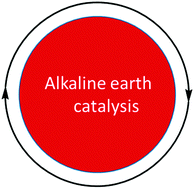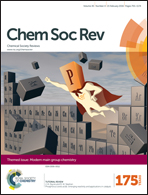Alkaline earths as main group reagents in molecular catalysis
Abstract
The past decade has witnessed some remarkable advances in our appreciation of the structural and reaction chemistry of the heavier alkaline earth (Ae = Mg, Ca, Sr, Ba) elements. Derived from complexes of these metals in their immutable +2 oxidation state, a broad and widely applicable catalytic chemistry has also emerged, driven by considerations of cost and inherent low toxicity. The considerable adjustments incurred to ionic radius and resultant cation charge density also provide reactivity with significant mechanistic and kinetic variability as group 2 is descended. In an attempt to place these advances in the broader context of contemporary main group element chemistry, this review focusses on the developing state of the art in both multiple bond heterofunctionalisation and cross coupling catalysis. We review specific advances in alkene and alkyne hydroamination and hydrophosphination catalysis and related extensions of this reactivity that allow the synthesis of a wide variety of acyclic and heterocyclic small molecules. The use of heavier alkaline earth hydride derivatives as pre-catalysts and intermediates in multiple bond hydrogenation, hydrosilylation and hydroboration is also described along with the emergence of these and related reagents in a variety of dehydrocoupling processes that allow that facile catalytic construction of Si–C, Si–N and B–N bonds.

- This article is part of the themed collections: Modern Main Group Chemistry and Celebrating the 2016 RSC Prize and Award Winners

 Please wait while we load your content...
Please wait while we load your content...